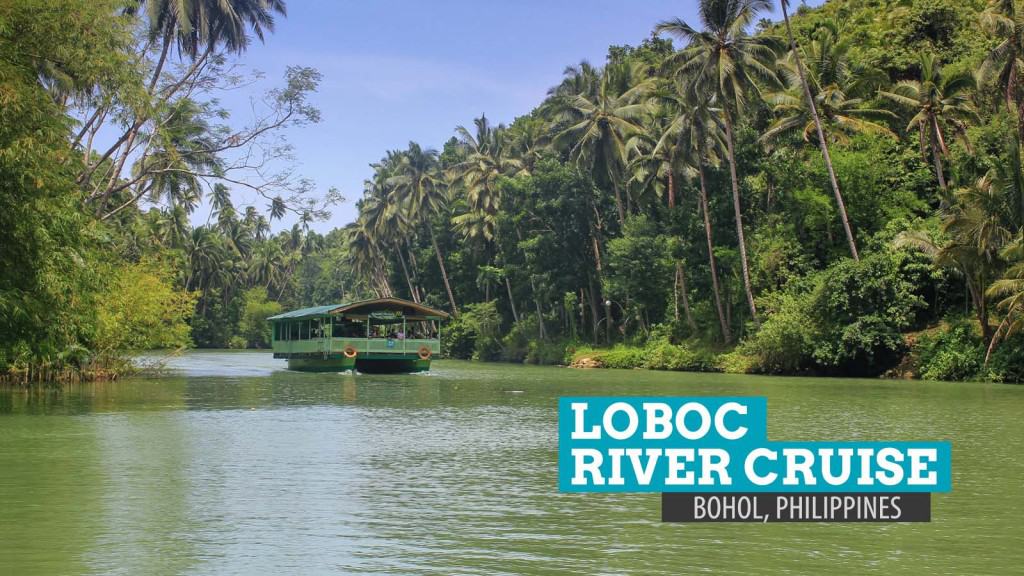2011 • 1 • 6
The bridge and the church are the two imposing structures in the landscape opposite the raft jetty. The Church of San Pedro (more commonly known as Loboc Church) stands proudly by the river. It is widely considered as the second oldest church in the province, next to Baclayon. The original church was constructed in 1602 but was replaced with the present church 35 years later. It has two faces: one side boasts a Baroque facade (built by the Jesuits) and the other bears a neoclassical porch (installed by the Recollects).
Beside the church is an unfinished bridge, the Loboc Bridge, that looks like a threatening storm that froze in the nick of time, just when it was about to demolish it. For the 20 minutes that I waited for our turn to board the raft, all I did was stare at it.
Too much thinking must have been exhausting because I just found myself by the buffet table as soon as we were called for boarding. The staff started loading the dishes and I was more than happy to dig in. They were the usual Pinoy dishes and there was nothing spectacular about them but the hunger was making me think like I was having the tastiest lunch ever. After all, the food wasn’t really the highlight of that hour; it was the cruise.
Our raft glided across the water as a band began performing old love songs. Even when I was gorging on a plateful of pork humba, I could not help stopping to appreciate the rustic charm of the place. Loboc River gives off a verdant glimmer, adding to the greenery that borders it left and right.
Along the way, locals live their lives as they normally do. Children are jumping from a tree branch, teenage boys are swimming on one side, and adults work by the river. Our boat stopped at a station where a group of people in light green — children and old folks alike — performed native Filipino songs and dances. It was delighting to see them showcase these dances and reintroduce them to us. It’s another proof of how the local community benefits from a booming tourism.
The sight of Busay Falls made everyone stand up to take the obligatory photos. It’s not a big waterfall, not at all. To be honest, it can be a little underwhelming especially if you’re expecting a grand finale to the cruise. But it is a good enough marker for the end of the trip. The raft turned around and we started our trip back to where we came from — the port adjacent Loboc Bridge.
It’s a curious thing, almost funny. It’s been known by many names. “Bridge to Nowhere” is one. One public official called it a “Monument to Stupidity.” How in the world did they allow the construction — or even the planning — of a bridge with a heritage treasure directly on its path? There’s plenty of space left and right; was it just a coincidence? Did they realize too late that the threatening bridge happened to be stemming to the wrong direction? Or were they planning to demolish the church? It just doesn’t make sense at all.
The longer I looked at it, the more questions kept popping in my head. I have asked our driver and a few other locals but almost everyone gave me vague answers, if not non-answers. Some blame corruption. Some say that part of the initial plan was to destroy the church but they didn’t have enough budget to do so. Others claim that there was gold buried underneath the church and the project was started to destroy it, thereby concealing a treasure hunt.
Whatever the score really is, it surely adds intrigue to the already fascinating town of Loboc.
How to get to Loboc: From Tagbilaran airport, you can take a tricycle to the Bus Terminal and board a bus to Loboc. If you’re taking a tour (offered by hotels and travel agencies), the Loboc River Cruise is usually one of the stops of the Countryside Tour. You may just ask your contact to stop here for lunch.
Buffet lunch: P300-P400 depending on your chosen floating restaurant.
Entrance Fee: P150
